
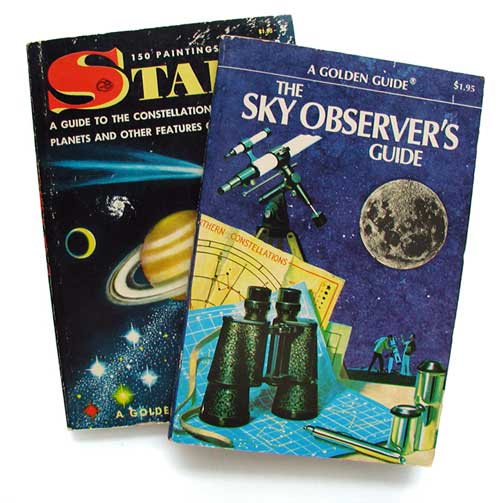
 |
| Telescope
catalogs of yore: Unitron, The Optical Craftsmen,
Criterion (Dynascopes) and Cave Astrola. |
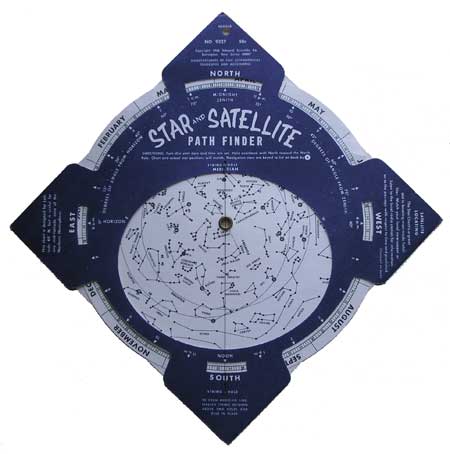 My
constellation-learning efforts became more systematic with the
help of a miraculous device: the Edmund Scientific Star and
Satellite Path Finder (a planisphere). This cardboard mechanism
was capable of showing where the stars would be at any given time
or date! It could actually predict their rising and setting! Now I
could really learn all those stars and constellations I'd been
reading about. The planisphere says that the great star Procyon
will rise at 10:30! Out I go...looking for a clear horizon to the
east...there it is, sparkling in the darkness! A night of wonders.
Aldebaran! Capella! The names of the stars inflamed the
imagination of someone still young enough so that every new
experience was deep and vivid. Once I convinced my parents to take
me to the house of some friends of theirs who lived in the country
so I could try my scope in a darker sky. We didn't stay long
enough for me to find anything, but I did notice a bright group of
stars near the northern horizon. "Wow," I thought, "that must be
something important." And then it clicked. Cassiopeia! Another
friend made and known.
My
constellation-learning efforts became more systematic with the
help of a miraculous device: the Edmund Scientific Star and
Satellite Path Finder (a planisphere). This cardboard mechanism
was capable of showing where the stars would be at any given time
or date! It could actually predict their rising and setting! Now I
could really learn all those stars and constellations I'd been
reading about. The planisphere says that the great star Procyon
will rise at 10:30! Out I go...looking for a clear horizon to the
east...there it is, sparkling in the darkness! A night of wonders.
Aldebaran! Capella! The names of the stars inflamed the
imagination of someone still young enough so that every new
experience was deep and vivid. Once I convinced my parents to take
me to the house of some friends of theirs who lived in the country
so I could try my scope in a darker sky. We didn't stay long
enough for me to find anything, but I did notice a bright group of
stars near the northern horizon. "Wow," I thought, "that must be
something important." And then it clicked. Cassiopeia! Another
friend made and known.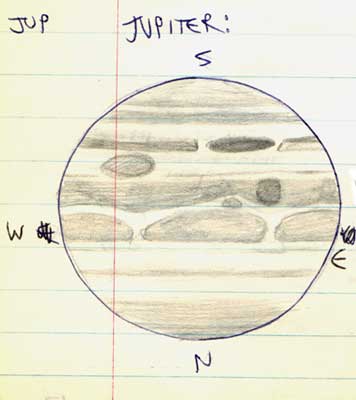 |
| Sketch of
Jupiter made at the eyepiece of my 3" refractor on
August 13, 1972. I wonder what I would see or draw now
if I went back and looked with the same scope at the
same time? Something better than this, I hope. |
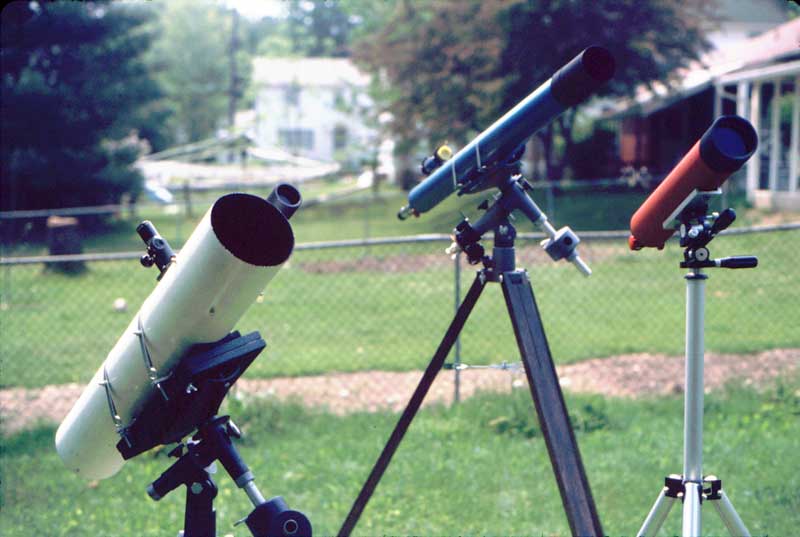 |
| A trio of home-assembled telescopes in my back yard, circa 1975. From left to right: Remmirath, a 6" f/5 reflector; Telescopium, a 3" f/15 refractor; and Borgil, a 3" f/6.5. All three scopes experienced various redesigns to make them lighter and more portable. All three wound up with different-colored paint jobs, too. Being unable to choose the color of my scopes is one thing I miss when using commercial instruments (I have no intention of going at my A-P scopes with a spray can). |
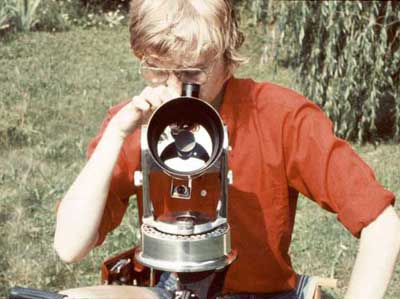 |
| A very
orange-shirted Joe peers through his mother's new
Questar telescope in 1976. |
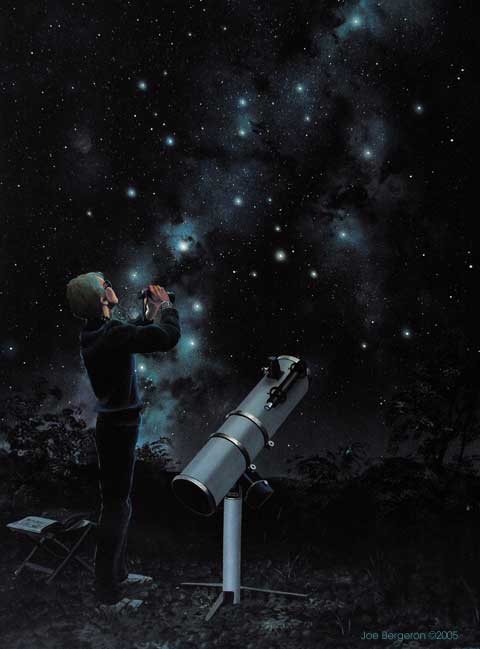 |
| Acrylic
self-portrait showing me observing with Telumehtar, an
8" f/5 reflector, in 1981. |
Copyright by Joe Bergeron.
 |
 |
 |
 |
 |
 |
 |